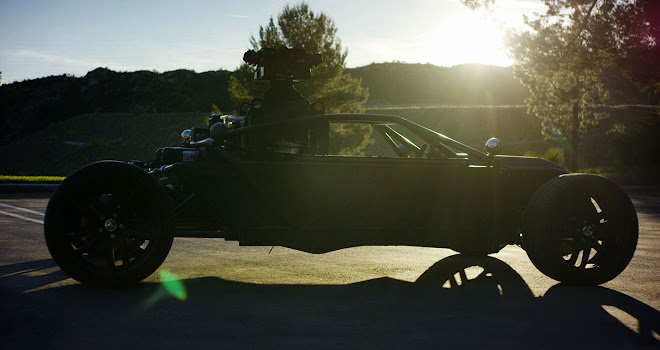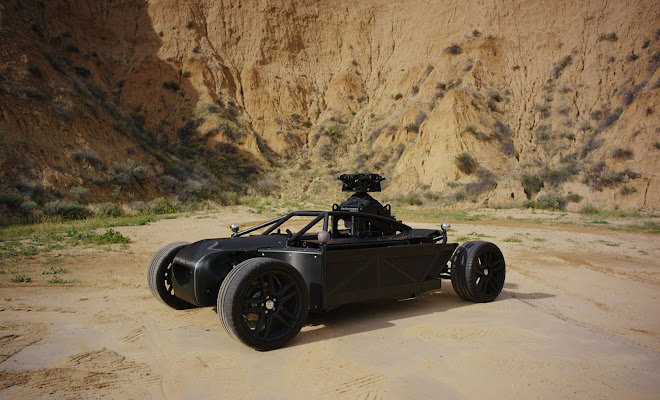Here’s a new electric car that’s destined to get around a lot, but you’ll probably never see.
Called the Blackbird, it’s a bespoke vehicle designed to act as a stand-in for almost any other car, in adverts, TV and films. It doesn’t look like any other car but that’s fine, because it will be wearing computer-generated bodywork by the time you see it zooming around on the screen.
The car is the brainchild of The Mill, a London-based digital post-production company that won an Oscar for putting tigers in the frame with Russell Crowe in the film Gladiator. As well as tweaking Hollywood’s output, the company polishes up music videos, creates adverts and squares various on-screen circles for shows like Doctor Who.
The Mill commissioned the Blackbird to be the automotive equivalent of Andy Serkis, who has memorably played the likes of King Kong and Gollum despite not resembling a giant gorilla or an emaciated goblin. While Serkis has to don a bodysuit covered in ping-pong balls, so that computers can track his precise movements in the resulting footage, the Blackbird comes ready built with four tracking orbs like bed posts plus white spots at strategic points on its chassis.

The Blackbird’s party piece, and its strength as an automotive body double, is that it’s highly configurable. With a chassis that concertinas to alter both wheelbase and track, plus highly adjustable suspension that can dive, squat and roll in imitation of just about any other setup, the car can make its axles dance in the manner of any car you care to name. Well, any car you can provide detailed dynamic data about, at least.
Bolt on the wheels from the particular variety of car you aim to duplicate, and the Blackbird is ready for its closeup.
Powered by batteries and an electric motor, the motion-capture car can even be programmed to provide equivalent acceleration to whatever model it’s mimicking. As Tesla has proven with its ludicrous mode, which will drag the Model S to 60mph in 2.6 seconds, electric cars can match the performance of just about anything on the road. The Blackbird can even put in pauses in its propulsion at just the right moments to simulate the gearchanges of a conventional car.
The bodywork that will eventually appear on film is entirely virtual, of course, painted over the top of the actual car (except for its wheels) through the computer-animated wizardry that is The Mill’s bread and butter.

Ensuring the CGI cars look genuine requires realistic reflections, so the Blackbird shoots high-definition 3D imagery from the rig on its roof as it drives along, together with laser scanning to measure the distance to the car’s surroundings in every direction. With this data, The Mill’s clever computers can work out exactly how ambient light would bounce off the bodywork of the car it’s aiming to recreate.
Why go to all this trouble, rather than simply filming the actual car? The flexibility of the Blackbird means it can accurately simulate cars that are still on the drawing board, or that are too valuable to risk. In the case of an advert, a manufacturer can also tweak the same footage to reflect local variations in trim and appearance around the world, without having to film the same sequence with 50 slightly different cars.
The Blackbird itself took two years to create, and was hand built for The Mill by California-based special effects company Jem FX.
Jem FX is based in a business park that was once the secretive research centre of aircraft maker Lockheed, where in the 1960s it developed the world’s fastest spy plane – the SR-71 Blackbird. No prizes for guessing how The Mill’s zippy little car got its name.




